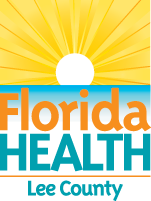It's a New Day in Public Health.
The Florida Department of Health works to protect, promote, and improve the health of all people in Florida through integrated state, county, and community efforts.
FLORIDA DEPARTMENT OF HEALTH ADVISES CAUTION WHEN RED TIDE IS PRESENT
August 12, 2021
FLORIDA DEPARTMENT OF HEALTH
ADVISES CAUTION WHEN RED TIDE
IS PRESENT
Cautionary Notice for Boca Grande Pass/Gasparilla Island State Park
Contact:
Tammy Soliz, Public Information Officer
Lee-PIO@flhealth.gov
(239) 308-5196
Lee County, Fla.—The Florida Department of Health in Lee County is reminding residents and visitors to use caution when on the beach or in waters with high concentrations of red tide. Protect your family and pets by staying away from affected areas until the blooms move further offshore or they go away. Red tide is a naturally occurring algae that has been documented along Florida’s Gulf Coast since the 1840s and occurs nearly every year. Because the blooms are patchy, other local beaches may be okay to visit.
The department encourages everyone to review these tips to stay safe while enjoying Florida’s beaches:
- In Florida, red tide is caused by a naturally occurring microscopic alga called Karenia brevis.
- Red tide algal blooms can change rapidly, staying in one place for months or just a few days or weeks.
- Symptoms from breathing red tide usually include coughing, sneezing and watery eyes. For most people, symptoms are temporary and typically go away when the person leaves the area. Wearing a particle filter mask may lessen the effects, and over-the-counter antihistamines decrease symptoms.
- People with chronic respiratory problems, like asthma, should avoid areas with active red tides. People with symptoms that persist should seek medical attention.
- Pet owners are advised that red tide poses a risk to animals brought to the beach. Red tide can affect animals if they drink affected water, lick their wet paws or fur, or breath marine aerosols.
- Residents sensitive to red tide and living in beach areas affected by blooms are advised to close windows and run the air conditioner (making sure that the AC filter is maintained according to the manufacturer’s specifications).
- Seafood, including shellfish, in restaurants, hotels, grocery stores, and markets is safe to eat. Cooked shellfish (oysters, clams, mussels) thoroughly to prevent exposure to Vibrio vulnificus. Shellfish should not be harvested or eaten from areas with active red tide.
Beachgoers are encouraged to check conditions before they go to the beach as conditions can change daily.
For the latest Red Tide Status Reports: Visit the FWC Red Tide Current Status website.
Red tide questions/health concerns? Call the Florida Poison Control Information Center at 1-800-222-1222
Current Beach Conditions: Visit the MOTE Beach Conditions website.
Report Fish Kills: On the FWC How to Report a Fish Kill website or call 1-800-636-0511
Shellfish Harvesting Areas: Visit the FDAC Shellfish Harvesting Area website.
##
About the Florida Department of Health
The department works to protect, promote and improve the health of all people in Florida through integrated state, county and community efforts.
Follow us on Twitter at @HealthyFla and on Facebook. For more information about the Florida Department of Health please visit www.FloridaHealth.gov.




Connect with DOH